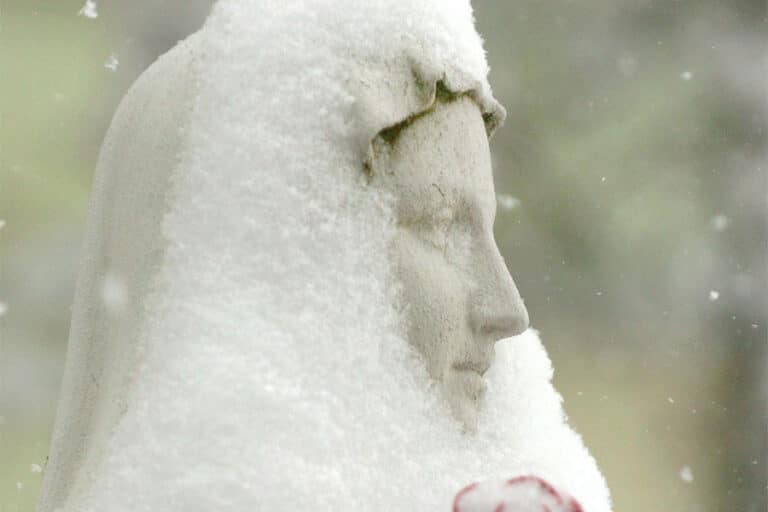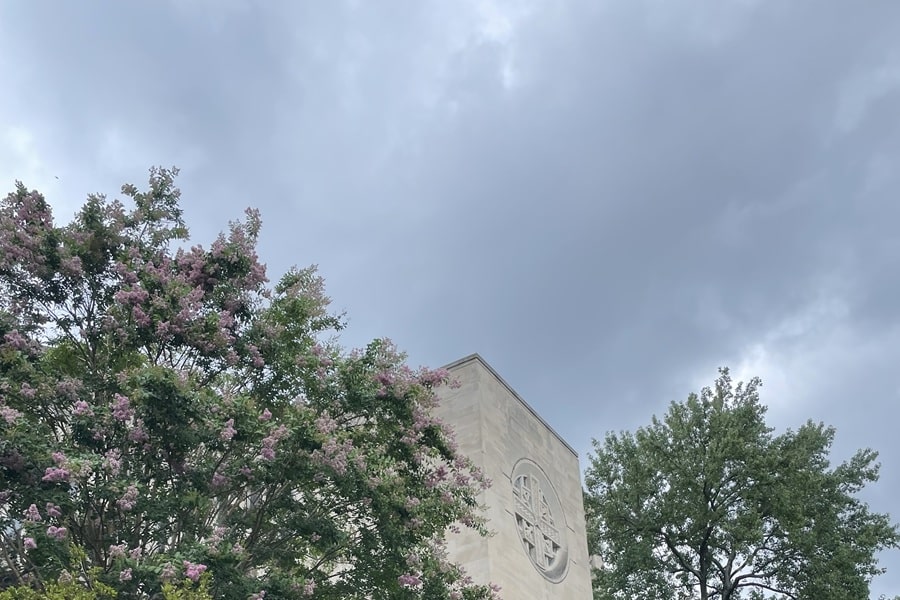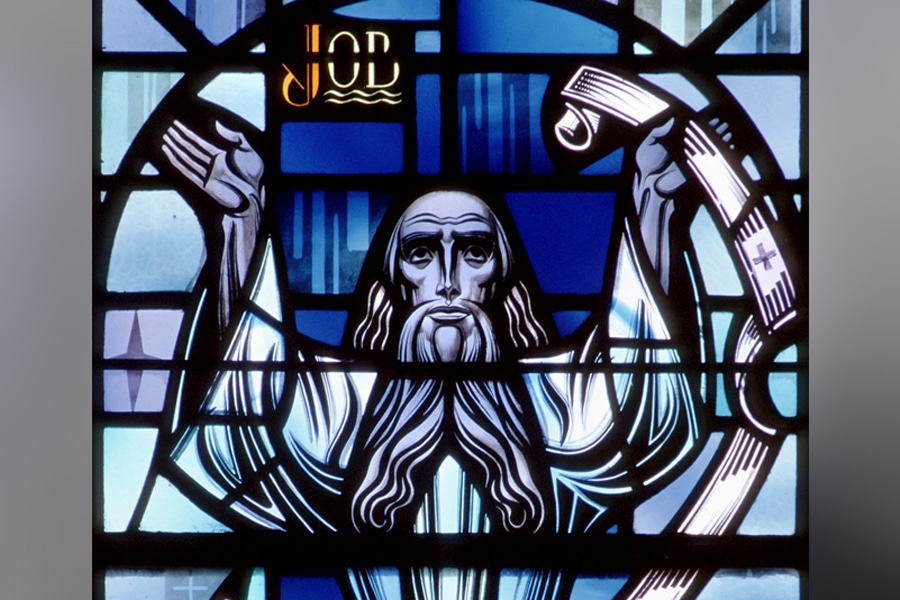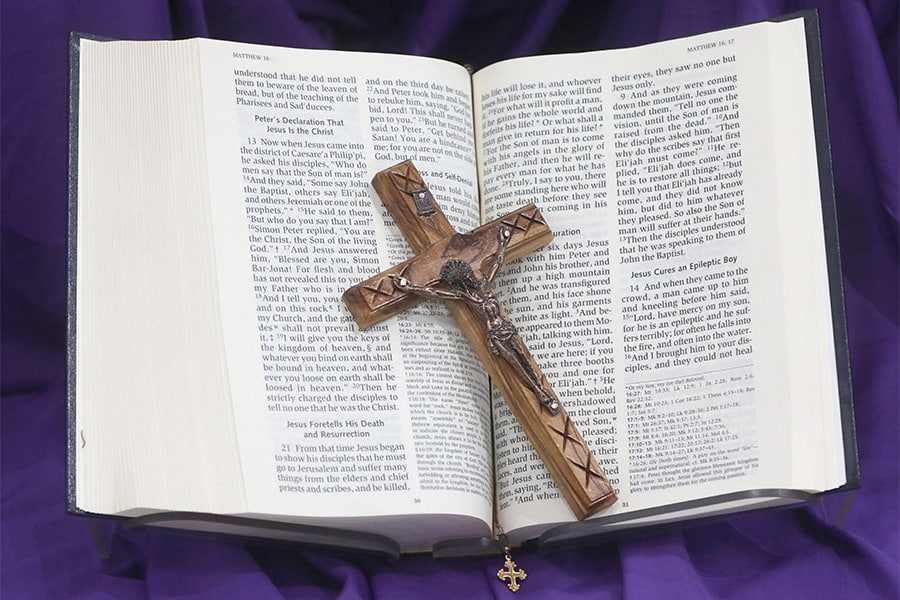In addition to the local celebrations that commemorate the dedication of a diocesan cathedral or a parish church, the universal church liturgically celebrates the dedication of four Roman basilicas: St. John Lateran (Nov. 9), those dedicated to Sts. Peter and Paul (Nov. 18) and St. Mary Major (Aug. 5).
The Basilica of St. Mary Major is the largest church dedicated to Mary in Rome and one of the most ancient shrines honoring the Mother of God. It contains a variety of ancient mosaics that date back to the fifth century. It is also home to a variety of important relics, especially a wooden fragment from the crib of Christ’s nativity. Also there rest the remains of several popes and the tomb of St. Jerome.
Mary Major’s history dates back to the fourth century, when a church was constructed on its present site under the direction of Pope Liberius. While the original church lasted only about 100 years, work commenced on the current edifice in the fifth century. Today, much of it remains intact — although it has been amended and enlarged at several junctures.
The optional memorial of the Dedication of St. Mary Major, celebrated on Aug. 5, recalls the importance of Mary in the life of the church. But it also calls to mind the Marian title of “Our Lady of the Snows.”
According to a legend, Pope Liberius was involved in the church’s initial construction because of a rich couple who were without heirs and wanted to give their fortune to honor the Blessed Virgin Mary. After asking in prayer how they could honor her, Mary appeared to them in a vision. Afterward, on Rome’s Esquiline Hill, seemingly in answer to their request, snow fell from the sky — miraculously so, since snowfall on a Roman August day would be extremely abnormal. As a result, the couple determined a church must be built to honor the Blessed Virgin on the site where the miraculous flurries fell.
The legend has not necessarily stood the test of time. No mention is made of anything supernatural behind St. Mary Major’s construction before the year 1000.
Whether the legend is true or not, devotion to Mary under the title Our Lady of the Snows has endured. Several basilicas, shrines and churches are named in honor of this title throughout the world. Its popularity reiterates Mary’s status as a beacon of hope for Christians who turn to her in times of trial, perhaps when it seems that a miracle is needed and when it looks like all hope is lost. Through Mary’s mediation, recourse to God’s mercy is sought when it appears that there’s no way — embodied in the legend of the miraculous snowfall in the Roman summer.
Devotion to Mary under the title of Our Lady of the Snows is primarily fostered in the United States in Belleville, Illinois — just across the Mississippi River from St. Louis — at the National Shrine of Our Lady of the Snows under the direction of the congregation of the Missionary Oblates of Mary Immaculate.
The construction of this shrine seems fitting and appropriate to have been started and operated by missionaries since they understand, perhaps more than anyone, the importance and need to implore Mary’s aid amid often difficult and seemingly impossible circumstances.
The Missionary Oblates of Mary Immaculate congregation was founded by French bishop St. Eugene De Mazenod in 1816. The founder placed his new missionary order under Mary’s maternal protection and care. The Oblates came to North America not long after their founding, and they are known for their work in remote locations throughout the continent.
The Our Lady of Snows shrine in Belleville traces its origins back to the 1940s, inspired by German Oblate Father Paul Schulte. Known as “The Flying Priest,” Father Schulte was a pilot and had the distinction of being the first priest to celebrate Mass while airborne — in the Zeppelin airship Hindenburg just a year before its explosion.
Father Schulte put his talent as a pilot to work delivering medical supplies to Oblate missions, typically near the Arctic Circle. He once risked death himself while carrying out a lifesaving medical mission to rescue a brother Oblate priest who was on the brink of death. Flying through extreme weather, Father Schulte credited the success of his heroic ministry to Our Lady of the Snows — to whom he already had devotion and reportedly “when he was afraid of an imminent crash during a snowstorm, he promised Our Lady to spread her devotion under that title if she came to his aid and saved him in this emergency.”
He did just that after his transfer to the Oblate’s now-closed St. Henry Preparatory Seminary in Belleville, alma mater of Chicago’s late Cardinal Francis E. George, who was also with the Oblates. Father Schulte was sent there during World War II because he was German and some suspected him of being a Nazi spy. He was ordered not to travel and was kept under FBI surveillance. This gave him the opportunity to deliver on his promise to Mary.
In Belleville, Father Schulte commissioned an image of Our Lady of the Snows to be painted, which depicts Mary and the child Jesus surrounded by the aura of the Northern Lights, under which is found a missionary and an airplane making a sick call to an Inuit mission. It remains at the shrine in Belleville today. A perpetual novena was established in 1943 in honor of Our Lady of the Snows, and as devotion to her grew, the Oblates inaugurated construction of a shrine to honor her in 1958.
The shrine, one of the largest outdoor shrines in the United States, is a place of pilgrimage, attracting around 350,000 visitors annually. As with all its counterparts, the shrine is primarily a place of prayer, conversion and healing — particularly through encounters with Mary’s son in the sacraments.
Those who honor Mary under the title of Our Lady of the Snows, or any other title, are asking Mary to beg God to make a way out of no way, to bring his grace into their lives no matter the circumstances, and to find peace and happiness in the will of God.
Those who honor Mary seek, and hopefully find, what she had in her heart some 2,000 years ago when she said “yes” to the Lord’s plan as a young peasant girl. What those who pray to Mary long for and receive is the hope that inspires the daring, intrepid missionaries who spread the Gospel with confidence that she will intercede for them.
Through Mary’s “yes” to the Lord, she made what seemed like a way out of no way — her “yes” brought salvation to a world awaiting it in darkness. Ultimately, those who turn to Mary are turning to her son — as has been clear since the earliest days of Marian devotion. Mary makes Jesus present to the world. And she teaches us to glorify him with our thoughts, words and deeds as members of his mystical body, the church.
Read More Commentary
Copyright © 2025 OSV News








